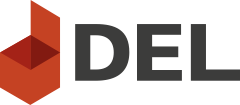Remote Bodies: collaborative design and fabrication studio for bodily interactions across the day-night divide
The theme of Embracing Uncertainty is undertaken by the curriculum of our course. In particular, we have students take the side of exploring uncertainty as a way to tell stories, because uncertainty affords the ambiguity that enables narrative design. The two sides of uncertainty are contrasted with one another. One side is the unpredictability that leads to anxiety and stress in our current situation. The other side is the ambiguity and unexpectedness that enables good story-telling. This curriculum takes advantage of this positive nature of uncertainty in a format where students themselves are already living with the negative uncertainty. They are deliberately asked to collaborate with others far away with less than optimal conditions of information deficit, such as knowing other members far on other side of the world, inability to experience the presence of others while designing for bodily interaction, and the current state of social uncertainty in New York and Hong Kong. However, the narrative design, positive side of uncertainty allows them to exercise the narrative potential of uncertainty in a positive application. This education intervention, as detailed in the abstract, makes it possible to actually embrace the uncertainty, as detailed in the theme. Most of what has happened so far involves minimizing risk and limiting the lack of information, but this approach is discarded for using the positive aspects of uncertainty in our project. In some sense, the “not knowing” aspect is an advantage in this curriculum. Studies have shown that particular dimensions of interaction are better suited to remote communication. For example, voice based interactions without visual input has been embraced in purely sonic interactions as well as more public apps like Clubhouse. Our experimentation also proposes a particular response to the uncertainty that comes from lack of presence. The fabrication, hands-on based nature of the student projects provides an investigation into remote presence that attempts to address uncertainty with technology while simultaneously embracing uncertainty through storytelling. As such, our explorations serves as one realization of the theme’s general goal of responding to global events by subverting existing ways of dealing with uncertainty.
Major challenges of pandemic-based isolated learning include the difficulty of performing studio-based demonstration in art and technology, and problems coordinating major time-zone shifts that involve collaborative efforts during day-to-night hours. Remote Bodies is a course for MFA students from City University of Hong Kong SCM and Parsons Design and Technology to deepen engagement by imagining and implementing remote presence strategies that extend our bodies across time, space, and culture. Unlike traditional studios that suffer from Zoom and management fatigue, we designed the course to allow students to take advantage of limits in information to tell unpredictable stories based on remote interactions, using uncertainty as a point of excitement as opposed to a source of anxiety. The key intervention is the deliberate limit to information that mimics the real world challenge. Students are given one of three themes: “giving without receiving,” “imagining without seeing,” “trusting without knowing.” Students are grouped into teams that are deliberately in opposite time-zones and engaged in different genres of work (e.g. science vs. art). Each week we present a different remote presence strategy to allow students to bridge the gap in knowledge. This includes VR (Mozilla Hubs), robotics (telepresence via Kinect), online games (gather.town), AR (custom app), etc. The student’s inherent limitations in information and circumstance are explored and used as material for the thematic story-telling interactions. For example, the cross-university teams may write a story for “trusting without knowing” by using a collaborative writing platform where each member is provided with the same story purpose, but only a certain amount of time to write her section of the story design. Thus they have to trust the team’s common purpose in the story design but use her own story archetype in the “finish each other’s stories” limitation trope. Another example is a team that must sketch out the other team member’s location by using sound-localization in VR only. Thus the students explore the deliberate limits in information as they explore the interaction associated with the themes, using uncertainty as a story-telling device rather than a source of frustration. In the subsequent second half of the course, students implement these stories of interactions into bodily devices fabricated from materials culturally relevant to each site, New York and Hong Kong. This more fabrication-heavy section of the course focused on collaborative making across the world, resulting in wearable devices, computer vision-based interactive systems, remote robotics applications, and interactive fashion. Finally, the students are asked to put these interactive devices in the context of their own experience during the pandemic. Revisiting the interactive stories they told in the first section, they use the projects produced in the second section to fill in the needs deliberately created and resolve the design challenges proposed. This class flow creates a positive collaborative environment that utilizes uncertainty to create narrative-based interactions that creates excitement and wonder from lack of information, while simultaneously allowing students to resolve their own personal anxieties using projects that can gap bodily spatial and temporal divides.
